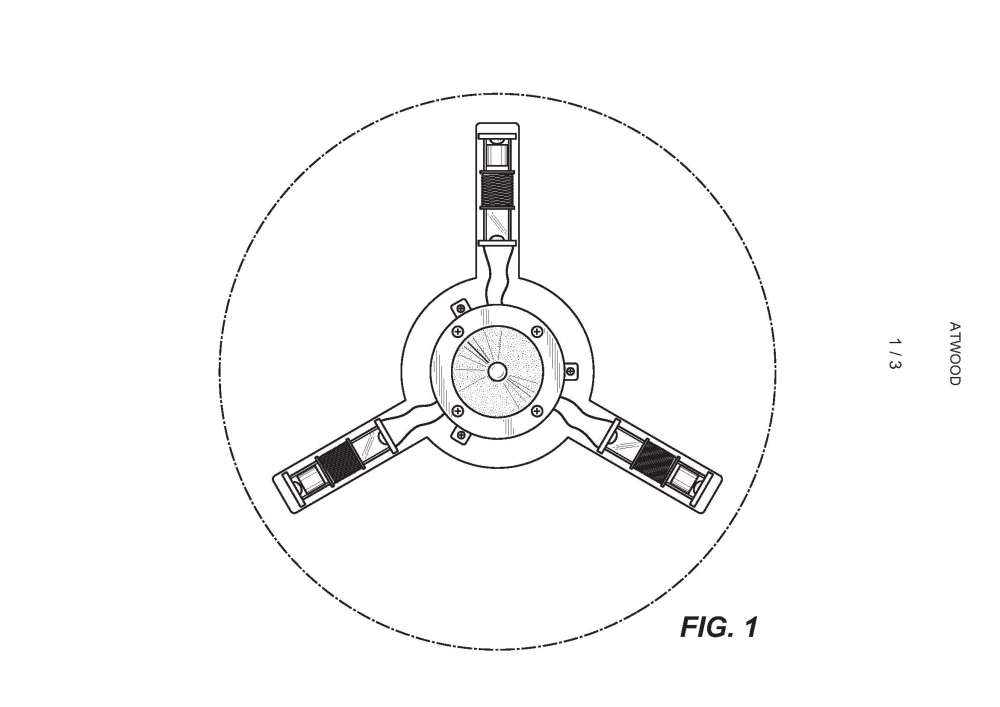SOUND GENERATION APPARATUS
FOR
AN ELECTRIC VEHICLE
US Patent # 8,179,234
Dennis Atwood
I have invented a sound generation apparatus for a hybrid or electric vehicle which is attached to, or integrated into, a wheel. Faraday generators are positioned radially around the wheel, and as the wheel rotates, the generators supply electrical current to charge a battery that supplies power to a microcontroller that is programmed to simulate a motor sound of a petroleum powered vehicle, with the sound being emitted from a speaker mounted on the wheel hub. The microcontroller also detects pulses from the Faraday generators to determine whether the vehicle is accelerating, deceleration or moving in reverse and, based upon the state of motion, modifies the simulated motor sound to represent those motions.
The invention is intended to decrease the threat of bodily injuries that silent vehicle engines pose to pedestrians and other persons and the potential of property damages resulting from collisions between hybrid vehicles and electric vehicles and between those vehicles and petroleum powered vehicles. While the injuries and damages can occur in many different environments, parking lots are certainly one of the most dangerous
There are no devices in the market today that address the problem of low speed impact in auto/pedestrian collisions. During manufacturing it can be integrated into the wheel of an E.V. or H.E.V. or as an aftermarket device by a wheel manufacturer.
As the market for E.V. increases, the need for safety devices also follows. Congress has recently enacted the Pedestrian Enhancement Act of 2010 to address this issue.
As soon as the wheels of the vehicle start to turn, pulses of electricity are generated as magnets within the Faraday generators start moving back and forth relative to respective induction coils. The microcontroller, in turn, senses the pulses and immediately causes sound to be emitted from the speaker. As the vehicle accelerates, the sound is modified to indicate the increase. At a threshold speed (e.g. 15mph) the sound will cease until a lower speed is detected. At speeds above the threshold, the magnets, due to centrifugal force, will stop moving back and forth and the sound will cease.
As an integrated device, apparatus can be enclosed within an attaching plate to create an assembly that can use the wheel lugs to attach the assembly to the inside surface to the wheel. As an aftermarket device, the apparatus can be simply clamped to the outside wheel plate.
Based upon some reasonable assumptions concerning the design of a conventional sound generation device that uses the vehicle’s battery, I have calculated that it will take approximately 20 watt-hours to operate the sound generation device. Depending on the rating of the battery, this could translate to up to about a 1.5% reduction in battery life. My sound generation device eliminates this reduction in battery life and, most importantly, eliminates the resulting reduction in the vehicle’s range by using the rotary motion of the vehicle’s wheels to generate the sound.
Like this entry?
-
About the Entrant
- Name:Dennis Atwood
- Type of entry:teamTeam members:Dennis Atwood
Missy Bell
Jay Hendrickson - Software used for this entry:Microsoft Visio, Microchip MPLAB
- Patent status:patented

